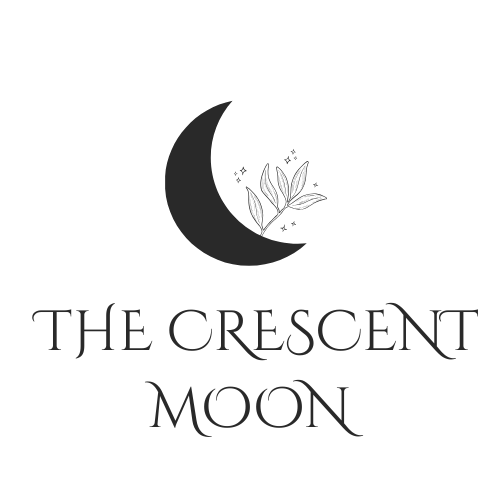
How to Make Your Own Incense- Loose Incense Recipes
Share
To begin making your own high quality fragrant incense blends, use all natural and highly aromatic ingredients. Begin with dried herbs, woods and spices you like, and try out new things as you get more confident and interested. Always include at least one resin or wood as a foundation for your mixtures.
Some suggested herbs include: Cassia, Chamomile flowers, cinnamon bark, calamus root, cardamom seeds, clove, corriander, galangal root, ginger, hyssop, iris, juniper berries and wood, lavender, lemongrass, lemon verbena, lemon balm, majoram, mistletoe, mugwort, patchouli, rose, rosemary, sage, star anise, thyme, vanilla.
Some suggested Resins include: Amber, aloe, balsalm, benzoin, camphor, copal, dammar, dragons blood, frankincense, galbanum, mastic, myrrh, pine, storax.
Some suggested woods include: Aloeswood / agarwood, cedar, juniper, palo santo, sandalwood, spruce, pine.
If you're new to making incense mixtures, start with no more than three ingredients, such as one wood and two herbs, or one resin, one wood, and one herb. As you gain experience, you can gradually increase the variety of ingredients you incorporate.
To make your loose incense using a mortar and pestle, start by gathering your ingredients and place them in the mortar in small amounts. Grind and crush them together using the pestle until they form a fine, consistent mixture. Store your finished loose incense in a sealed container away from light and moisture to preserve its fragrance. Pre powdered wood like milled palo santo or sandalwood is an easier option for beginners. If some resins are sticky, place in the freezer for 15 minutes. You will find them easier to grind up. I tend to just smash and break up larger lumps of resin and not grind right down to a powder. Experiment with textures and different ingredient combinations.
Creating loose incense blends can be a wonderful way to customize your spiritual or aromatic experience. Here are a few basic recipes to get you started. Remember to adjust quantities based on personal preference and to be mindful of any allergies or sensitivities.
Calming Blend
- 2 parts Lavender buds
- 1 part Chamomile flowers
- 1 part Frankincense resin
Energizing Blend
- 2 parts Sandalwood chips
- 1 part Cinnamon chips or powder
- 1 part Cloves
Purification Blend
- 2 parts Sage leaf (white sage or culinary sage)
- 1 part Cedarwood chips
- 1 part Juniper berries
Meditation Blend
- 2 parts Frankincense resin
- 1 part Myrrh resin
- 1 part Palo Santo wood chips or powder
Love and Attraction Blend
- 2 parts Rose petals
- 1 part Jasmine flowers
- 1 part Patchouli leaves
Grounding Blend
- 2 parts Benzoin resin
- 1 part Vetiver root powder
- 1 part Patchouli leaves
Protection Blend
- 2 parts Dragon's Blood resin
- 1 part Mugwort leaf
- 1 part Bay leaves
Wealth and Prosperity Blend
- 2 parts Cinnamon chips or powder
- 1 part Basil leaves
- 1 part Bay leaves
Some other combinations you might want to try, infused with your own intentions, could include different mixes designed to create specific atmospheres or enhance your spiritual rituals.
1 part sandalwood
1/2 part cassia
1/2 part clove
2 parts sandalwood
1 part benzoin
1 part star anise
1 part cassia
1/2 part rose mallow seeds
2 parts frankincense,
1 part sandalwood,
1 part aloeswood,
1 part clove,
1 part cinnamon
2 parts sandalwood,
1 part galangal,
1 part myrrh,
1/2 part cinnamon,
1/2 part borneol ( camphor)
3 parts gold copal,
1 part dark copal,
1 part myrrh,
1 part balsalm of tolu,
1/2 part vanilla
4 parts juniper tips,
2 parts white sage,
2 parts sweet grass
2 parts sandalwood,
1 part mastic,
1 part myrrh,
1 part cinnamon bark,
1 part spikenard,
handful of rose petals
1 part storax,
1 part frankincense,
1 part cassia,
1 part sandalwood
2 parts sandalwood,
1 part frankincense,
1 part matsic,
1 part lemongrass
2 parts frankincense,
1 part myrrh,
1 part cedar,
1/4 part pine
2 parts frankincense,
1 part myrrh,
1 part mastic,
1/2 part coriander
2 parts cedar,
1 part vetiver,
1 part lavender,
1/2 part benzoin,
handful of rose petals
2 part Benzoin
1 part Cinnamon
1 part Basil
3 part frankincense
2 part myrrh
1 part rosemary
1 part cedar
1 part juniper
3 part sandalwood
1/2 part lavender
1/2 part majoram
1 part cloves
1 part nutmeg
1 part lemon balm
1 part poppy seed
1 part cedar
1 part lemon peel
1/2 part calamus root
1/2 part juniper berries
1/2 part frankincense
Full Moon Ritual Incense
2 parts sandalwood
2 parts frankincense
1/2 part gardenia petals
1/4 rose petals
a few drops of ambergris oil
Winter Solstice Ritual Incense:
1 part clove
1 part nutmeg
1 part cinnamon
1/2 part lemon balm
1/2 part cirtus peel
Summer Solstice Incense:
3 parts Myrrh
2 parts mugwort
1 part cinnamon
1 part chamomile
1 part bay leaves
1 part rosemary
How to Use Loose Incense
Place a small amount of the blend on a charcoal disc in a heat-resistant dish or incense burner. Light the charcoal and allow it to heat until it starts to glow and crackle, then sprinkle the incense blend over it. Only Burn your charcoal on a bed of sand in a heatproof dish and also place on a heat proof surface as charcoal generates an enormous amount of heat and your dish will heat up significantly.
Remember, the key to making effective loose incense blends is experimentation and intuition. Feel free to adjust the ratios or ingredients to suit your preferences and spiritual intentions.
View our range of loose incense ingredients here!


